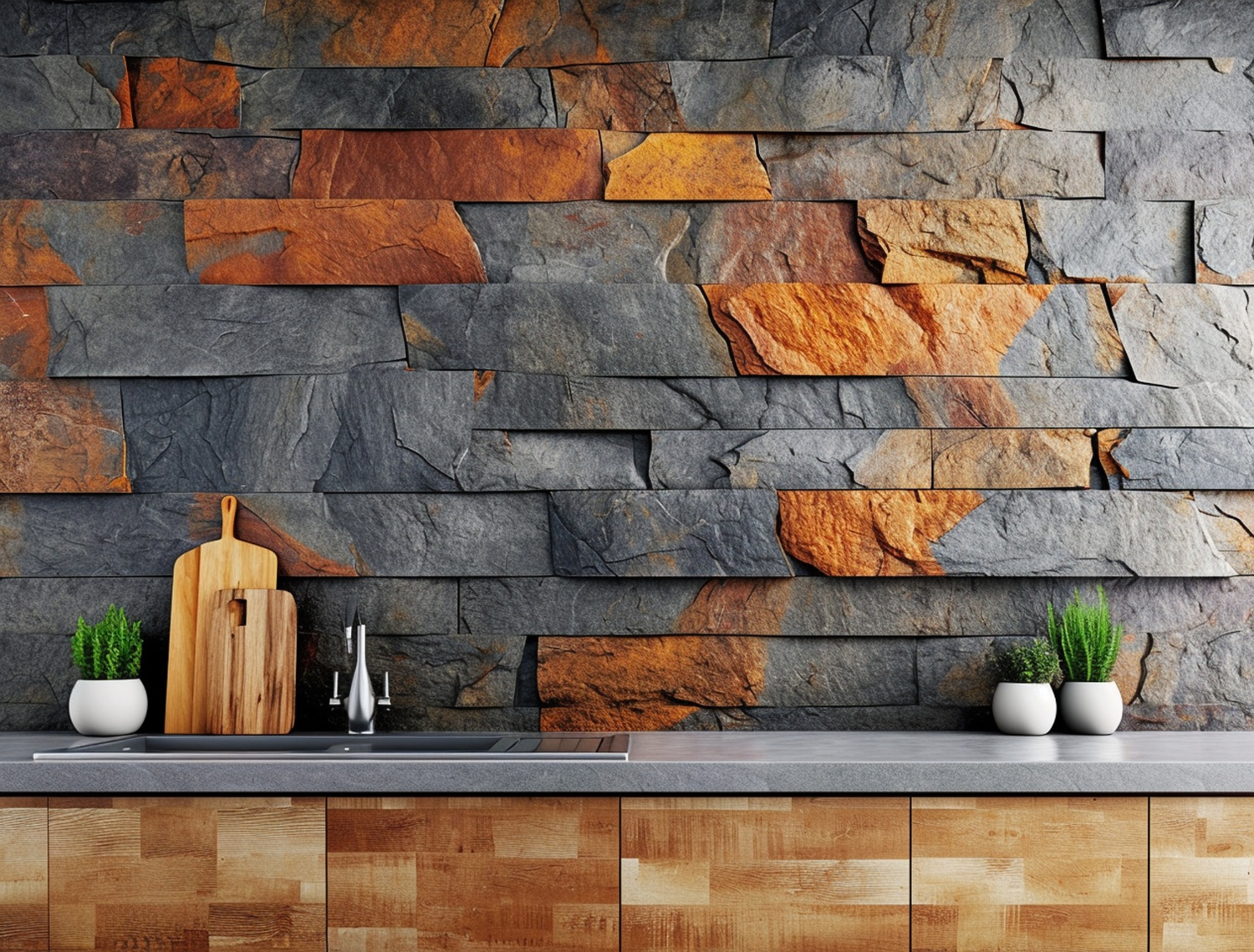
When it comes to upgrading the elegance and functionality of your home, wall cladding is an adaptable and practical solution. It not only adds visual appeal but also provides protection and insulation. In this guide, we'll walk you through the process of choosing the right wall cladding for your home, ensuring you make informed decisions that align with your style and needs.
It refers to the application of one material over another to provide a layer. This layer serves both decorative and functional purposes, offering protection from the elements, insulation, and an upgraded appearance. This can be used both on the exterior and interior walls of a home. Cladding on walls can transform the look and feel of a space.
There are various types of wall cladding materials to choose from, each with its own set of benefits. Some popular options include:
Stone Cladding: Provides a natural and rustic look, suitable for both exterior and interior applications.
Wood Cladding: Offers a warm and traditional feel, ideal for creating cozy interiors.
Brick Cladding: Gives a classic and timeless appearance, often used for both decorative and structural purposes.
Metal Cladding: Provides a modern and industrial look, known for its durability and strength.
Before diving into the different options, it's essential to understand what you want to achieve. Consider the following factors:
Elegant Appeal: What style are you aiming for? Modern, rustic, traditional, or contemporary?
Functionality: Do you need cladding for insulation, protection, or purely decorative purposes?
Location: Are you planning to clad interior walls, exterior walls, or both? Different types of cladding on walls may suit different purposes.
Each cladding material has its pros and cons. Here’s a closer look at some common materials:
Pros:
Natural and elegant look
Durable and long-lasting
Low maintenance
Cons:
Can be expensive
Heavy and may require structural support
Pros:
Warm and inviting appearance
Adaptable and can be painted or stained
Good insulation properties
Cons:
Requires regular maintenance to prevent rot and decay
Can be susceptible to pests
Pros:
Classic and timeless look
Durable and fire-resistant
Good thermal mass
Cons:
Heavy and may need additional support
Can be costly
Pros:
Modern and sleek appearance
Highly durable and strong
Resistant to pests and rot
Cons:
Can be expensive
May require insulation to prevent temperature fluctuations
The installation process can vary significantly depending on the material you choose. Some materials, like vinyl and metal, are relatively easy to install and may even be suitable for DIY projects. Others, such as stone and brick, typically require professional installation due to their weight and the need for precise placement. Professional installation ensures that cladding on walls is done correctly and efficiently.
Different materials have different maintenance needs. For instance:
Stone Cladding: Generally low maintenance but may require occasional cleaning to remove dirt and grime.
Wood Cladding: Needs regular sealing or painting to protect against moisture and pests.
Brick Cladding: Low maintenance but may need repointing over time.
Metal Cladding: Low maintenance but may need occasional repainting or rust treatment.
Budget will play an Important role in your decision-making process. It's essential to balance your desire for a particular look with the costs associated with the material, installation, and maintenance. While some options like vinyl are more budget-friendly, others like stone and brick can be quite costly but offer long-term benefits. Investing in cladding for home can increase the value and elegant appeal of your property.
The climate in your area can influence your choice of wall cladding. For example, wood cladding may not be ideal in very humid or rainy regions due to the risk of rot. Similarly, metal cladding might require additional insulation in areas with extreme temperatures to prevent heat loss or gain. The right choice of cladding for home depends on the specific environmental conditions.
Consulting with professionals can provide valuable insights and help you make informed decisions. Architects, builders, and interior designers can offer recommendations based on your specific needs, preferences, and budget. Professional guidance can ensure that cladding for home meets all your requirements.
Interior wall cladding can transform the look and feel of your home. Here are some benefits:
Elegant Appeal: Adds texture and depth to your walls, creating a focal point in any room.
Insulation: Helps in regulating indoor temperatures, making your home more energy-efficient.
Protection: Shields walls from damage and wear, extending their lifespan.
Soundproofing: Some materials offer sound insulation, reducing noise levels inside the house.
Stone Wall Cladding: Perfect for creating a rustic or earthy look in living rooms, fireplaces, and accent walls.
Wood Wall Cladding: Adds warmth and coziness to bedrooms, living areas, and home offices.
Brick Wall Cladding: Ideal for industrial or loft-style interiors, offering a timeless charm.
Metal Wall Cladding: Best for modern and minimalist interiors, providing a sleek and clean look.
Using cladding on walls inside your home can dramatically change the ambiance and functionality of the space.
Exterior wall cladding not only upgrades the appearance of your home but also provides several functional benefits:
Weather Protection: Shields your home from rain, wind, and UV rays.
Insulation: Improves thermal efficiency, reducing energy costs.
Durability: Protects against physical damage and wear over time.
Low Maintenance: Many materials require minimal upkeep, saving time and effort.
Stone Cladding: Ideal for a natural and timeless look, suitable for facades and garden walls.
Wood Cladding: Offers a traditional and eco-friendly option, great for cottages and cabins.
Brick Cladding: Provides a durable and fire-resistant solution, perfect for classic homes.
Metal Cladding: Modern and robust, suitable for contemporary homes and commercial buildings.
Choosing the right cladding for home exterior can upgrade the curb appeal and provide long-term benefits.
Choosing the right wall cladding for your home involves careful consideration of your needs, preferences, and budget. By understanding the different materials available and their respective benefits, you can make an informed decision that upgrades both the elegance and functionality of your home. Whether you’re looking to add a rustic charm with stone cladding, a cozy feel with wood, or a modern touch with metal, the right wall cladding can transform your living spaces into something truly special.
By following this step-by-step guide, you can confidently select the perfect wall cladding that aligns with your vision and lifestyle. Remember to consider factors like installation, maintenance, and climate to ensure your choice not only looks great but also stands the test of time
1. What is wall cladding?
It is the application of one material over another to provide a protective and decorative layer. It can be used on both interior and exterior walls to upgrade elegance, provide insulation, and protect the underlying structure.
2. What are the benefits of wall cladding?
This offers several benefits, including improved elegant appeal, increased insulation, weather protection, durability, and low maintenance. It can also help in soundproofing and adding a unique texture to your home’s design.
3. Is wall cladding suitable for both interior and exterior walls?
Yes, It can be used for both interior and exterior walls. For interiors, it can add texture and style, while for exteriors, it provides additional protection against weather and upgrades the home’s curb appeal.
4. What maintenance is required for wall cladding?
Maintenance requirements vary by material:
Stone cladding: Generally low maintenance but may need occasional cleaning.
Wood cladding: Requires regular sealing or painting.
Brick cladding: Low maintenance but may need repointing over time.
Metal cladding: Low maintenance but may need occasional repainting or rust treatment.












